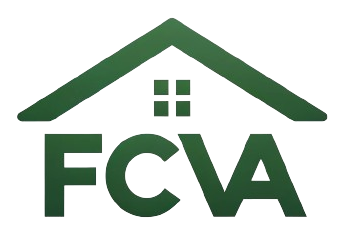Selling A Home With Mold Issues: 6 Fast Steps To Take
Have you recently discovered mold in your home and are now facing the daunting task of selling it? Selling a home with mold issues can feel overwhelming, but it doesn’t have to be. Understanding the steps you can take to address mold and successfully sell your property is key. Let’s walk through six fast steps to help you navigate this situation with confidence.
Step 1: Assess the Mold Situation
Before diving into any fixes or sales strategies, it’s crucial to accurately assess the extent of the mold problem.
What to Do:
- Inspect your home thoroughly, paying special attention to areas with excess moisture, such as bathrooms, kitchens, basements, and attics.
- Look for visible signs of mold, which can appear in various colors and textures—everything from fuzzy spots to slimy patches. Take note of how extensive the mold growth is.
Why It Matters:
Understanding the severity of the mold situation will guide you in determining the necessary steps to resolve it and how much you may need to invest before listing your home.
Step 2: Consider Professional Help
While you might feel inclined to tackle mold removal on your own, hiring professionals could be the best course of action, especially for larger infestations.
Options for Professional Help:
- Mold Inspectors: They can provide a detailed report on the type, extent, and potential cause of the mold in your home.
- Mold Remediation Specialists: These experts safely remove mold and address the moisture problems that caused it.
Benefits of Professional Help:
Engaging professionals can save you time, reduce health risks, and often provide guarantees for their work, which can be appealing to potential buyers.
Step 3: Repair the Underlying Issues
Mold thrives in damp environments, so addressing the root causes of moisture is essential.
Common Repairs to Consider:
- Fixing leaks in roofs, plumbing, or foundations.
- Improving ventilation, especially in areas prone to humidity.
- Installing dehumidifiers to maintain optimal moisture levels.
Make It a Priority:
Taking these steps not only helps eliminate existing mold but also prevents future issues, making your home more marketable to buyers. A home that has been cared for will generally fetch a better price.
Step 4: Clean and Restore Affected Areas
Once the underlying issues have been addressed, it’s time to focus on cleaning and restoring the areas affected by mold.
Steps for Cleaning:
- Remove and dispose of contaminated materials, such as carpeting, drywall, or insulation, that cannot be cleaned effectively.
- Clean hard surfaces with a mixture of soap and water or a specialized mold-cleaning solution, ensuring you wear protective gear such as gloves and a mask.
- Allow affected areas to dry completely after cleaning.
Why Restoration Matters:
Restoring your home to a mold-free state not only increases its appeal but also demonstrates to potential buyers that you’ve taken necessary actions to ensure a safe and healthy environment.
Step 5: Disclose the Situation
When selling any home, transparency is crucial. Laws vary by state on the need to disclose mold issues, but honesty will foster a sense of trust with potential buyers.
How to Disclose:
- Be upfront in your listing about any mold issues and the actions you’ve taken to address them.
- Provide documentation of any inspections, remediation, or repairs that relate to the mold issue.
Building Trust:
By being transparent, you not only comply with regulations but also encourage an open dialogue with buyers. They will appreciate your honesty, which might make them more inclined to proceed with the transaction.
Step 6: Consider Selling As-Is
If the mold situation feels too overwhelming or you’ve exhausted your options, selling your home as-is could be a viable route.
What to Do:
- Work with a real estate agent who understands the market and can help you set an appropriate price considering the condition of the home.
- Prepare to attract buyers who may be looking for a fixer-upper or are more prepared to deal with the issues themselves.
Pros and Cons of Selling As-Is:
| Pros | Cons |
|---|---|
| Quick sale process | Potentially lower sale price |
| No need for extensive repairs | Limited buyer interest |
| Attracts investors | May lead to more negotiations |
Final Thoughts on Selling As-Is:
Selling as-is may seem like a hassle, but it can ultimately relieve you of stress and provide a quick solution—especially if your focus is on moving forward from a challenging situation.
Conclusion: Moving Forward With Confidence
Selling a home with mold issues may require a bit of extra effort, but it’s certainly achievable. By following these six steps, you can address the mold, prepare your property for sale, and navigate the real estate process with more confidence.
Remember, whether you choose to remediate the mold fully or sell as-is, knowledge and transparency will be your best allies. As you take each step, you can find peace in knowing you are making decisions that will benefit both you and future buyers. If you feel uncertain about what to do next, consider seeking assistance from real estate professionals who specialize in selling homes with unique challenges. They can provide the guidance needed to help you achieve your goals.
Ready to sell your house fast in Virginia? FastCashVA makes it simple, fast, and hassle-free.
Get your cash offer now or contact us today to learn how we can help you sell your house as-is for cash!
Disclosure: As an Amazon Associate, I earn from qualifying purchases.



